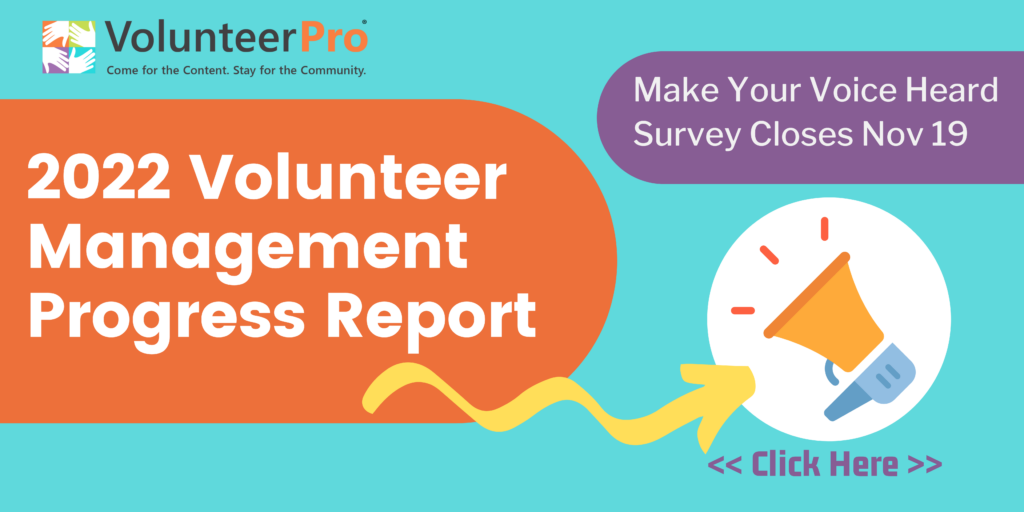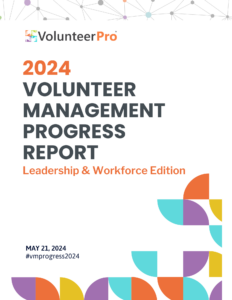How to Conquer Recruiting Volunteers Using Personas
When you think about recruiting volunteers, you need to imagine your ideal volunteer. What kind of work are they doing in your organization? How do they interact with you, your co-workers, other volunteers, your clients? What skills do they have? What values? How do they communicate?
Just pause for a minute and luxuriate in the picture and the feeling of that ideal volunteer.
It’s probably pretty easy for you to come up with that picture. If you could design the perfect volunteer, they would meet all of your needs and then some.
So how do we get to the point where your program is full of exactly that kind of volunteer? Oddly, it hinges on shifting your eyes from your needs to the needs of that potential volunteer.
(Psst. If you need a little extra help recruiting volunteers, take our eCourse! It even includes a worksheet to help you develop your own personas.)
[/fusion_text][/fusion_builder_column]
Recruiting Volunteers Using Personas
Recruiting volunteers with a truly targeted message requires that we focus on the audience on the receiving end of that message. Who are they? More, what are their motivations and fears when it comes to your message?
We answer these questions in the process of creating target audience personas, or in our case, volunteer personas.
When doing this, there is a lot of data to consider and several different ways to get it. The easiest place to start is with the big buckets of information that are most readily available to you.
Look at your current pool of volunteers (or the ideal one you would create) and choose some broad categories that help categorize them. This isn’t about stereotyping or labeling. This is about understanding the groups of people who feel most compelled to your work, or who fit in best with your work or mission.
For example, if your volunteer program requires hoisting heavy bales of hay, or moving big buckets of rocks, more than likely your ideal volunteer isn’t going to be in an older age demographic. This isn’t to say that there aren’t extremely fit and able-bodied grandmas out there, but that you probably aren’t going to design your messaging to target them. You’d be better served by recruiting volunteers from an audience that is more densely populated with people in good physical fitness – young adults, for example, or people who participate in your local fitness clubs.
It’s possible (if not probable) that you’ll have more than one audience group to target. Great! It’s also likely that the definition of those groups will change as you build your audience persona – also great! You have to start somewhere when recruiting volunteers, so once you have those big buckets defined, you can move on to building out the specifics.
Recruiting Volunteers According to Age, Gender, and Affiliation
Age bands don’t have to be super specific, but they are often a good place to start when categorizing your persona groups. Gender identity, if any, can be another broad category. In some cases, gender may not matter, but for certain types of work, it can matter a great deal. For example, domestic violence shelters often limit volunteers with certain genders for the safety and comfort of their residents.
A third category that may be a good place to start is with cultural affiliation, especially for missions that predominantly serve specific cultures. If you run a program where the people who volunteer do not look like the people you serve, definitely take a look at affiliations and how they can play a stronger role in your messaging.
From these categories, you can start to think broadly about your persona’s life stages and interests. As you reflect upon a persona’s age, gender, and affiliation, think about what life might look like in their shoes. Are they busy running kids to soccer practice? Are they in the early stages of retirement? Maybe just finishing college and starting a career? What can you probably assume about the group given their life stage?
Recruiting Volunteers According to Education, Interests, and Nuances
Now let’s go a level deeper. Within your persona group (which maybe needs to be split into more groups now), what kind of education do you commonly see? Is it scattered or pretty much one level of educational attainment?
What kind of interests does your persona group typically have? (Outside of volunteering for your organization, obviously.) Do they tend to be involved in other social causes? Are they yoga practitioners, wine drinkers, dirt bike riders? Are they crafters or sports fans? Again, you’re not looking for a specific activity that everyone in the group does, but, generally speaking, in what kinds of things does your group have interests?
From there, maybe you can imagine some of the unappreciated or overlooked nuances the group might experience. The vast working knowledge of retirees is often overlooked, for example.
Note of caution: If at any point you start to have more “I don’t knows” than good estimates, invite individuals who match your personas to coffee and ask if you can pick their brain to help you with recruiting volunteers. You can also use this technique to verify your assumptions along the way. It’s ok to have “I don’t knows.” These are just areas where you need to get to know your persona better, in whatever way works for you.
Recruiting Volunteers According to Location, Friends, and Trusts
Now that you’ve got some baseline demographic data established for recruiting volunteers, it’s time to dig into more behavior-based data.
First, ask yourself if you were to go into your community or online, where would you find members of your persona group? At the dog park? At work? (What kind of job?) At kids activities? A museum? On Facebook? Watching Netflix? Network news?
Who are they hanging out with in these spaces? Among the people with whom they spend time, who do they trust the most? Where do they go for information?
When you begin thinking about a persona’s influencers, you get closer to understanding where and to whom you need to be targeting your message.
This level also starts to tell you more about where you need to go in order for your persona to see or hear your message. If your persona couldn’t give two hoots about social media, do not spend time targeting them on Twitter. If you’re looking for people who do crafting, your flyer probably isn’t getting much traction at the monster truck rally.
Once you know a bit about your people, go to where they are. Do not expect them to just show up on your doorstep.
Recruiting Volunteers According to Values, Fears, and Motivations
Next, you’ll want to categorize what your group values and what they fear, so you can target what motivates them.
For example, if a group values career advancement and fears never getting a well-paying job, you know they are motivated by career-advancing and resume-building volunteer opportunities. If the group generally values community health and individual contributions and fears repercussions of the opioid crisis, they may be motivated by being able to do something tangible to help someone in recovery.
Do not overlook personal connections as strong motivators for any cause. In fact, you may find that you have a whole population of people who are good potential volunteers to recruit because they’ve been personally impacted (directly or indirectly) by your mission. That is some serious motivation (and possibly a whole other persona)!
Removing Barriers to Entry
Finally, consider the group’s barriers. As we get caught up in motivating people to volunteer, we can forget that there are people out there who genuinely want to volunteer but can’t for whatever reason. You might be able to alleviate some of those barriers. Perception barriers or ones related to ability and understanding are all things you can remove with messaging or clarity, or training.
A careful assessment might also uncover barriers you are inadvertently creating. Maybe changing your shifts would align better with the bus schedule, allowing volunteers to get to you safely and without long waits.
Do you have processes that are unnecessarily burdensome for volunteers to complete prior to getting a volunteer slot? Can you maintain organizational needs and adjust the process to make volunteering more accessible?
Even if you can’t remove all the barriers, you need to be aware of them and periodically assess how you can help diminish them. This is especially important in programs that lack diversity. Too often the good intentions of one group create barriers for another. As proud stewards of volunteerism, we need to be aware of and change that wherever we can.
Recruiting Volunteers is All About the Volunteer… Not You
Notice that even though this process is focused on recruiting the ideal volunteer for your organization, it has very little to do with you or your organization. It may seem odd at first, but finding your ideal volunteers is more about them than you.
When you know what matters to an ideal, potential volunteer, you can respond to match that value. You recruit the volunteer of your dreams by being the answer to their dreams. That’s what we call a win-win.
Your goal is to understand your potential volunteer so well that, to them, volunteering with your organization feels like a no-brainer. Notice that the goal isn’t to understand your needs. It’s to understand theirs.
Give each of your personas a specific person’s name and make it your mission to get to know them, little by little. Call in people who match your volunteer recruitment personas, and ask what they think about your messaging for their group. Take note of how your groups respond to different messaging and adjust your recruiting strategy accordingly.
Eventually, you can start asking yourself How would “Marissa” the middle-aged mom respond to this request? Is “Bill” the retired tradesman more likely to be motivated by an emotional appeal or one that’s data-driven (or both)?
Building Target Audience Personas is a Process
Building volunteer recruitment personas is a process – one that will evolve as you learn more about your people and the needs of your program change. Also, since it’s a process, if you can’t get all the way through it right now, that’s ok. The further you can define your audience the better, even if it’s just basic demographics to start.
Developing knowledge of your ideal volunteer is what will eventually lead back to that picture of your ideal volunteer at work in your program. You’ll attract the skills, values, and styles you need by focusing first on what the people with those attributes need from you.
Leaders like you have exhibited phenomenal spirit and dedication in 2021. And we want to ensure that your voices and experiences are heard.
In this survey we will explore the impacts of COVID on both you and your organization over the past year. We appreciation your participation.
Your answers will be anonymous and the survey takes LESS THAN 5 MINUTES to complete. At the end of the survey, you will be able to register for a free Sneak Peek Webinar where we will share the early results exclusively with participants before the general public.








